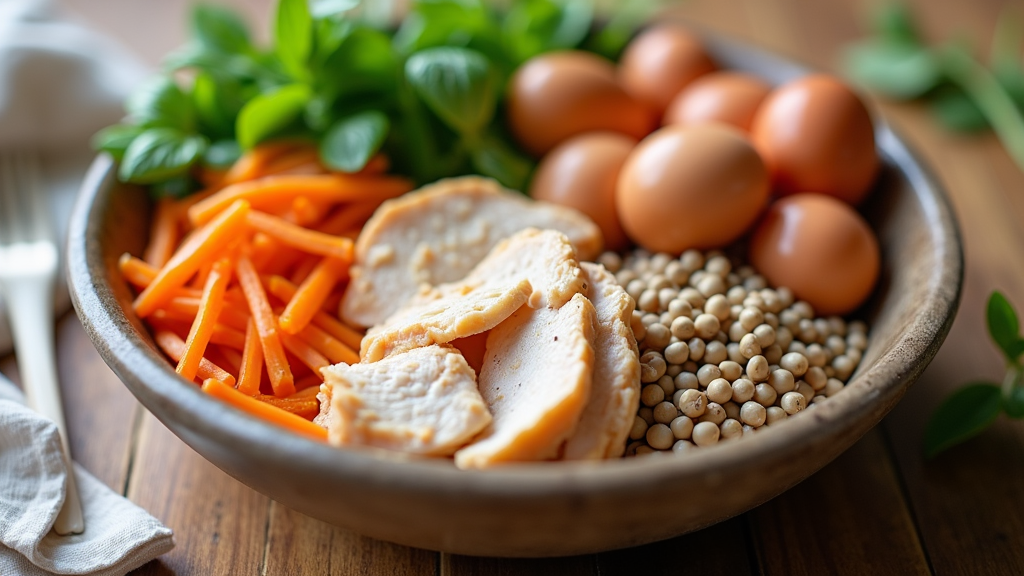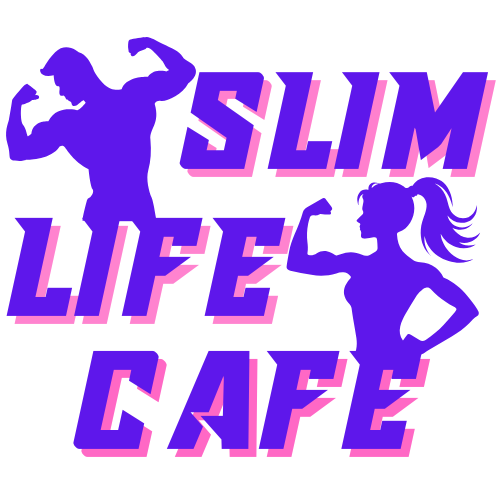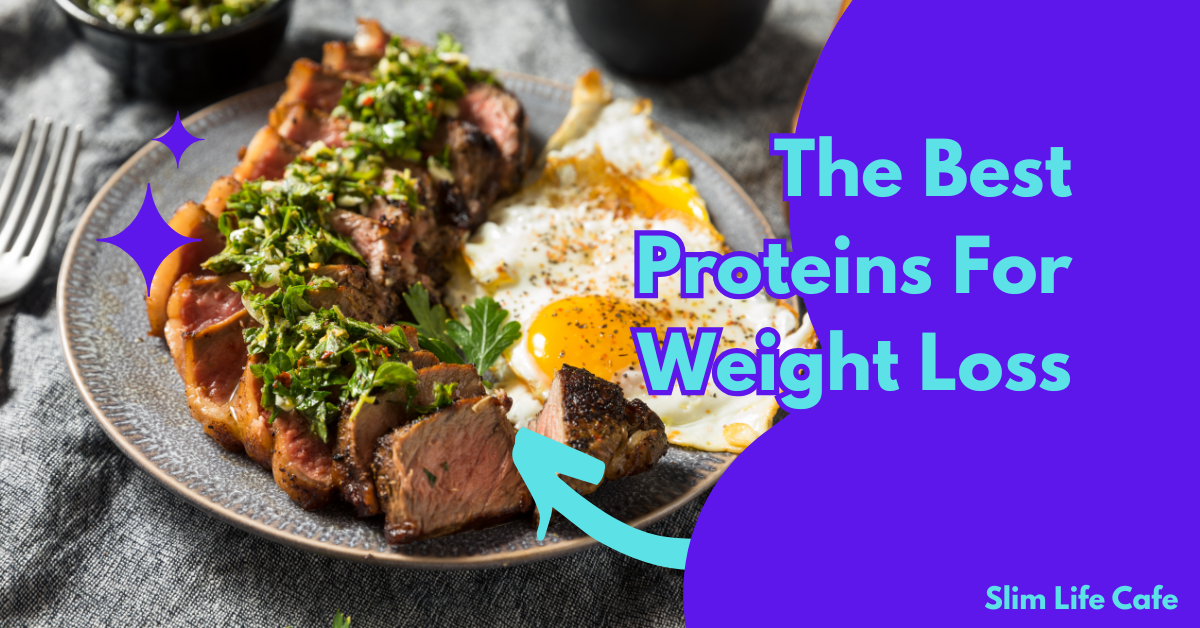Protein: The Key to a Successful Weight Loss Journey
Protein can really transform your weight loss journey. Over the years, I have seen how choosing the right protein not only satisfies hunger but also gives a boost to your metabolism. In this article, I’m jumping into the best protein strategies for weight loss. I will break down why protein is a key factor and share practical tips to help you get the most out of your diet. Protein isn’t just about building muscles. It also supports vital functions such as repairing tissues and preserving muscle mass while you lose fat. This guide will help you understand how protein works, why it is very important for your metabolism, and how adding it to your meals can steer you toward a healthier lifestyle.

Understanding Protein for Weight Loss
Protein has a wide range of roles in the body. When you boost your protein intake, you feel fuller for longer and naturally tend to eat less. Research has shown that a high-protein diet can temporarily speed up your metabolism because your body uses more energy to break down protein. Moreover, when you reduce calories to lose weight, there is a risk of losing muscle along with fat. Consuming enough protein helps preserve muscle mass, ensuring that most of the weight you lose is fat rather than muscle. This benefit is really important for keeping your metabolism active. Protein also plays a key role in repairing and maintaining tissues. By including sufficient protein, you support a balanced nutritional profile that not only curbs hunger but also keeps your energy levels steady throughout the day. Many nutrition experts suggest making protein a central part of any weight loss plan because its benefits extend far beyond muscle building.
Choosing the Right Protein Sources
With many protein options available, it can be confusing to pick the best one. Your choice depends on factors like dietary restrictions, taste, and overall nutrition. Traditional animal proteins—such as lean meat, poultry, fish, and eggs—are popular because they contain all the essential amino acids. For example, lean chicken or turkey provides excellent protein quality with little fat, making it an ideal option for weight loss.
Plant-based proteins are another smart choice if you avoid animal products. Foods like lentils, beans, quinoa, and tofu not only supply protein but also add fiber, vitamins, and minerals that benefit your overall health. When combined properly, these proteins cover all your amino acid needs and work well in vegetarian or vegan diets. Whey protein has also become very popular, especially among fitness enthusiasts. It is fast-digesting and rich in branched-chain amino acids that support muscle repair. Drinking a whey shake after a workout can help jumpstart recovery. However, if whey feels too heavy on your stomach, you might opt for plant-based proteins or collagen instead. Reading labels and choosing products with fewer additives can help you get pure, natural nutrition.
Integrating Protein into Your Daily Routine
Adding enough protein to your daily routine does not have to be complicated. Starting your day with a protein-rich breakfast sets a solid foundation. Whether you opt for a protein shake, scrambled eggs, or Greek yogurt with a handful of nuts, these choices help stabilize your energy levels and control hunger throughout the day. This steady supply of protein reduces abrupt spikes and drops in blood sugar that can trigger cravings later on.
For lunches and dinners, aim to include a serving of protein in each meal. Think about adding beans to a salad, enjoying a piece of grilled fish, or stirring a bit of plant protein powder into your smoothie. Even a small snack like cottage cheese paired with berries can keep you on track. Pre-planning your meals makes it easier to avoid high-calorie temptations and ensures that you consistently get the protein your body needs. Consistency is the key to success when it comes to maintaining muscle and aiding recovery as you lose weight.
Essential Tips for Getting the Most Out of Protein
Protein works best when provided in a steady stream rather than all at once. One effective strategy is to distribute your protein intake evenly throughout the day. Eating protein every few hours helps keep your metabolism active and your energy constant. In my experience, this method has led to fewer cravings and a more stable appetite. Portion control is very important, so even if you choose healthy protein sources, overeating can defeat the purpose. It helps to use kitchen scales or measuring cups to ensure you are consuming the appropriate amounts. Additionally, opting for whole foods over heavily processed products guarantees that you receive all the natural nutrients without extra additives.
It’s also wise to time your protein intake around workouts. Consuming a protein-rich snack within an hour after exercising can speed up muscle repair and support faster recovery. This habit not only improves your performance but also contributes to long-term weight loss by ensuring that your body continues to burn calories efficiently. Spacing out your meals with enough protein also prevents the energy crashes that can occur when blood sugar levels fluctuate too much.
Advanced Considerations for Maximizing Protein Benefits
If you are already comfortable incorporating protein into your meals but want to achieve even better results, consider some advanced strategies. One method is to adjust the timing of your protein consumption to align with your activity levels. Dividing protein into small, regular servings allows your body to have a consistent supply of amino acids. This approach can be especially beneficial during intense training sessions when your muscles require immediate and sustained repair. Another insight is to mix different types of protein. For example, combining a fast-digesting protein like whey with a slower-digesting one such as casein can offer both an immediate and a prolonged release of amino acids. This method helps manage hunger over longer periods and ensures that your muscles have a steady source of fuel, especially when there are long intervals between meals.
Choosing protein-rich snacks thoughtfully can also impact your progress. Instead of reaching for sugary options when hunger strikes, keep healthy snacks like almonds, Greek yogurt, or a protein bar within reach. Keeping track of your daily protein consumption using an app or food diary can help you see where adjustments are needed. This simple practice makes it easier to fine-tune your diet and achieve your nutritional goals.
Basic Protein Suggestions for Beginners
If you’re just starting out on your protein-focused weight loss journey, begin with simple, easily available options. Eggs are an excellent choice; they are packed with high-quality protein and essential nutrients. Whether you enjoy them boiled, scrambled, or as part of an omelet mixed with vegetables, eggs offer a quick and versatile meal that doesn’t add unneeded calories.
Greek yogurt is another approachable option. Its thick texture and high protein content, along with beneficial probiotics, make it a great choice for any time of the day. Combine it with fresh fruit, a drizzle of honey, or a sprinkle of nuts for extra flavor and nourishment. For those who prefer plant-based diets, beans, lentils, and tofu are outstanding protein sources. They not only help keep you satisfied longer due to their fiber content but also provide a balanced mix of nutrients. Over time, you might also consider trying protein powders that suit your dietary needs, whether they are made from whey, pea protein, or rice. Such powders can be seamlessly blended into shakes, pancakes, or baked goods to help you meet your protein goals without extra hassle.
Frequently Asked Questions
Many people have questions about protein and its role in weight loss. For instance, one common query is:
What protein burns the most fat? The answer is that no single protein works alone to burn fat; rather, high-quality proteins like lean meats and whey help maintain muscle mass and boost metabolism, which in turn can assist in fat loss.
Another frequently asked question is about the 30/30/30 rule. This guideline suggests having a small portion of protein and carbohydrates every 30 minutes during intense exercise. While not everyone follows it strictly, some find that it helps maintain energy during long workouts.
Lastly, many ask which protein source is the healthiest. Generally, whole foods such as chicken, fish, eggs, legumes, and tofu are recommended due to their comprehensive nutrient profiles and lower calorie content.
Wrapping Up
Choosing the right protein can truly be a turning point in your weight loss journey. With protein playing a dual role in controlling hunger and preserving muscle, its benefits extend well beyond a simple nutrient intake. By understanding how protein works and selecting the sources that best fit your lifestyle, you can enjoy a more energetic and balanced daily routine.
Experiment with different protein options—whether from animal sources or plants—and find the ones that match your taste and dietary needs. Start simple with eggs or Greek yogurt and gradually try lean meats, varied protein shakes, and complementary snacks. Small, consistent changes in your protein intake can lead to noticeable improvements in your overall well-being. Remember, a successful diet is not just about following trends. It is about making steady choices that keep you energized and support your personal weight loss goals. Stay mindful of your portion sizes, plan your meals ahead of time, and adjust your routine according to your progress. Enjoy the adventure toward a healthier you and celebrate the little victories along the way. Here’s to a future where every meal fuels not just your body but also your determination and drive for a better life.

